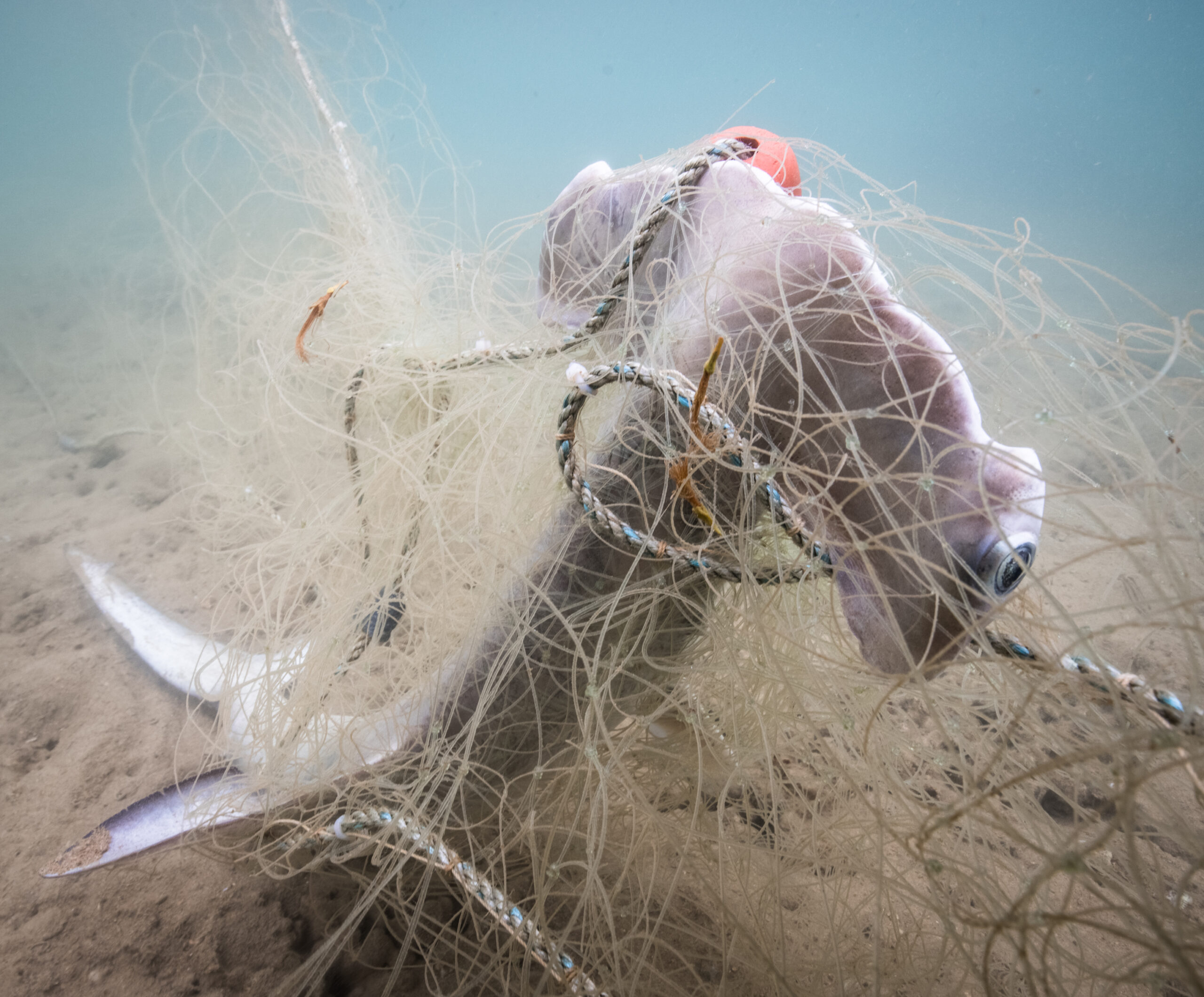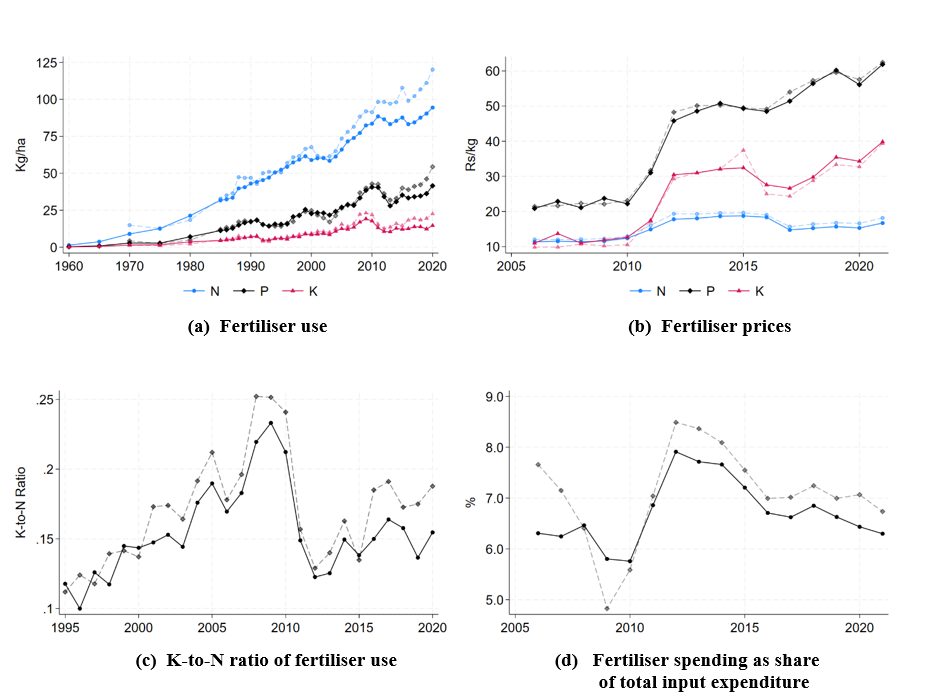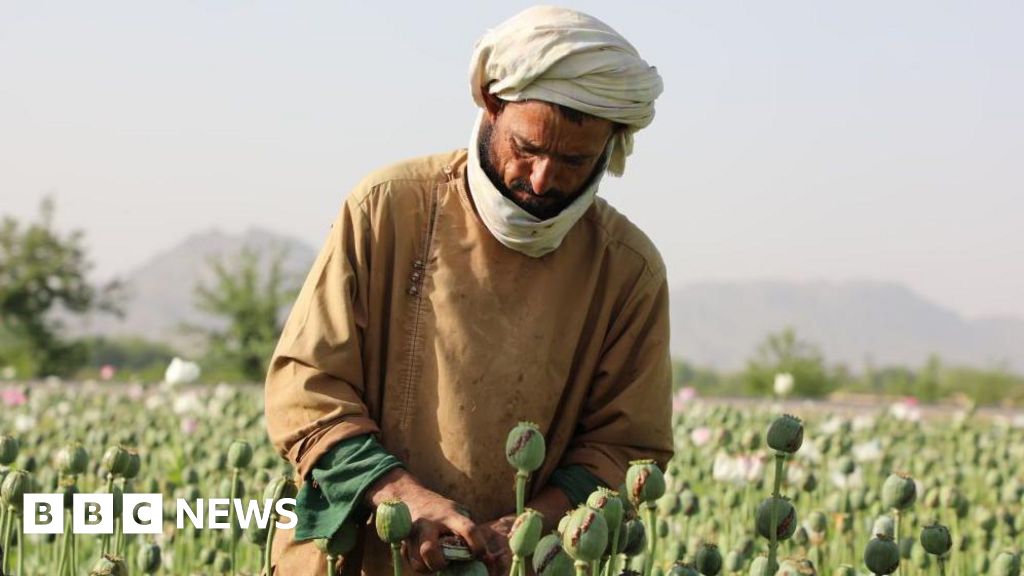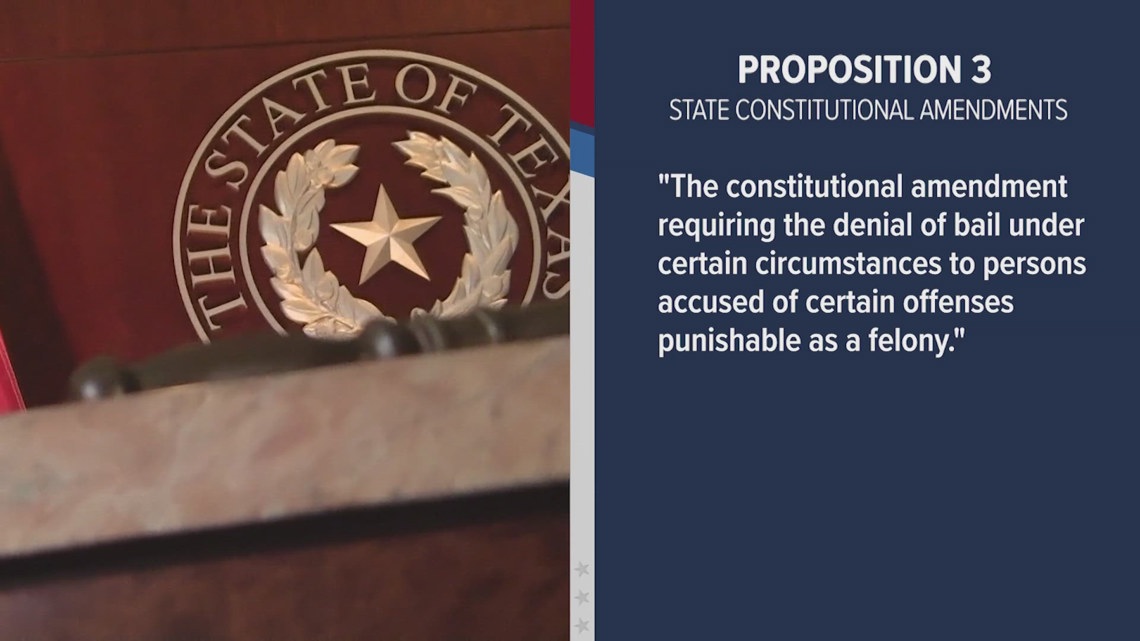ICE Campaign of Violence Will Lead to More Deaths – The Intercept
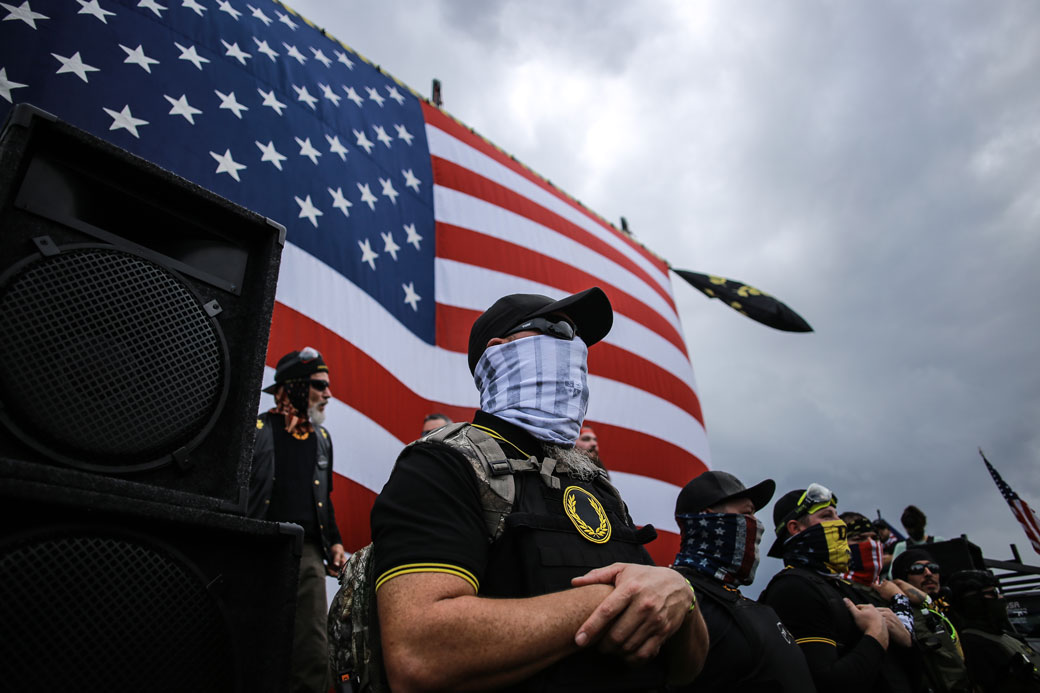
Report on Immigration Enforcement Actions in Southern California and Their Conflict with Sustainable Development Goals
Executive Summary
A series of recent events in Southern California involving U.S. Immigration and Customs Enforcement (ICE) has raised significant concerns regarding human rights and adherence to the United Nations Sustainable Development Goals (SDGs). A federal court has intervened to limit certain enforcement tactics, while large-scale raids on agricultural facilities have resulted in one fatality, numerous injuries, and mass detentions. These actions have profound implications for community safety, economic stability, and the rule of law, directly challenging the principles of several SDGs.
Incident Analysis: Immigration and Customs Enforcement (ICE) Operations
Raids on Agricultural Facilities
On Thursday, July 10, 2025, federal agents conducted militarized raids on two state-licensed cannabis farms in Ventura County, California.
- Over 200 individuals were detained across facilities in Carpinteria and Camarillo.
- The raids resulted in the death of Jaime Alanis, a farmworker who fell from a structure during the enforcement action.
- A reported eight hospitalizations and multiple other injuries occurred.
- Detainees included migrant workers, U.S. citizens, and protesters.
Allegations of Misconduct and Lack of Accountability
Reports from witnesses and organizations like the United Farm Workers (UFW) detail numerous allegations of misconduct, which conflict with principles of justice and human dignity.
- Excessive Force: Federal agents reportedly used tear gas and rubber bullets against protesters who had gathered in response to the raids.
- Indiscriminate Detentions: U.S. citizens were detained, including a disabled army veteran and a university professor. As of July 12, 2025, several citizens remained unaccounted for.
- Violation of Rights: The UFW stated that detained U.S. citizen workers were forced to delete photos and videos of the raid from their phones before being released.
Judicial and Governmental Response
Federal Court Ruling
On Friday, July 11, 2025, U.S. District Judge Maame Ewusi-Mensah Frimpong issued a temporary restraining order against certain ICE tactics.
- The ruling blocks ICE from conducting “roving” patrols that identify individuals for questioning based on race alone.
- It mandates that agents must have reasonable suspicion of a person’s undocumented status before making a detention.
- The order does not apply to raids on workplaces conducted with a warrant.
Administration’s Stance
The Department of Homeland Security (DHS) defended the raids as law enforcement actions, stating that four U.S. citizens were being processed for assaulting or resisting officers. Concurrently, the President announced “Total Authorization for ICE to protect itself” and arrest protesters “using whatever means is necessary.”
Implications for the United Nations Sustainable Development Goals (SDGs)
The reported enforcement actions and their consequences directly contravene the objectives of multiple SDGs.
SDG 16: Peace, Justice, and Strong Institutions
This goal is severely undermined by the reported events. The core objective is to promote peaceful and inclusive societies, provide access to justice for all, and build effective, accountable institutions.
- Target 16.3 (Rule of Law): The federal court’s finding that ICE patrols based on racial profiling are illegal points to a systemic challenge to the rule of law and equal access to justice.
- Target 16.6 (Accountable Institutions): Allegations of excessive force, indiscriminate detentions, and impunity for agents conflict with the development of accountable and transparent state institutions.
- Target 16.A (Strengthen National Institutions): The use of militarized tactics against civilian communities can be seen as weakening, rather than strengthening, institutions responsible for maintaining peace and justice.
SDG 10: Reduced Inequalities
The operations appear to disproportionately target specific ethnic and economic groups, exacerbating inequalities rather than reducing them.
- Target 10.2 (Empower and Promote Inclusion): The practice of racial profiling, as identified by the court, is the antithesis of promoting the social and political inclusion of all, irrespective of origin or migrant status.
- Target 10.3 (Ensure Equal Opportunity): Such enforcement actions create a climate of fear that limits opportunities for migrant communities and deepens their marginalization.
SDG 8: Decent Work and Economic Growth
The raids have a direct negative impact on labor rights, worker safety, and economic stability.
- Target 8.8 (Protect Labour Rights and Promote Safe Working Environments): The death of Jaime Alanis during a workplace raid underscores a failure to protect workers and ensure a safe working environment.
- Target 8.7 (End Child Labour): The UFW raised concerns about child labor on the raided farms, noting that detaining and deporting children is not a solution and that farm workers are often excluded from child labor protections.
- Target 8.5 (Full and Productive Employment): The disruption to the American food supply chain and the terrorizing of the agricultural workforce threaten productive employment and economic stability.
SDG 3: Good Health and Well-being
The physical and psychological health of the affected communities is compromised by these actions.
- Target 3.D (Strengthen Capacity for Early Warning and Risk Reduction): The fatality, hospitalizations, and injuries demonstrate a direct negative impact on public health and safety.
- The use of tear gas and the climate of fear contribute to long-term physical and mental health problems within the community, undermining overall well-being.
SDG 11: Sustainable Cities and Communities
The goal of making communities inclusive, safe, and resilient is threatened by enforcement actions that foster fear and instability.
- Target 11.1 (Ensure Access to Safe and Affordable Housing): While not a direct impact on housing, destabilizing communities and livelihoods threatens the security of residents.
- The separation of families and detention of community members erodes the social fabric, making communities less resilient and inclusive.
Analysis of Sustainable Development Goals in the Article
1. Which SDGs are addressed or connected to the issues highlighted in the article?
- SDG 8: Decent Work and Economic Growth – The article discusses issues related to farmworkers, including a workplace death, unsafe conditions, and reports of child labor, all of which fall under the purview of decent work.
- SDG 10: Reduced Inequalities – The core of the article revolves around racial profiling and discriminatory practices by law enforcement against immigrants and people of color, which is a central theme of SDG 10.
- SDG 16: Peace, Justice and Strong Institutions – The article details violence by state agents, rights violations, unlawful detentions, a worker’s death, and a court ruling aimed at promoting the rule of law and ensuring access to justice. These themes are directly related to building peaceful, just, and inclusive societies.
2. What specific targets under those SDGs can be identified based on the article’s content?
-
SDG 8: Decent Work and Economic Growth
- Target 8.7: “Take immediate and effective measures to eradicate forced labour, end modern slavery and human trafficking and secure the prohibition and elimination of the worst forms of child labour… and by 2025 end child labour in all its forms.”
Explanation: The article explicitly mentions “reports of child labor on site” and the United Farm Workers (UFW) union’s demand for legal protection for “minor workers,” highlighting the relevance of this target. - Target 8.8: “Protect labour rights and promote safe and secure working environments for all workers, including migrant workers…”
Explanation: The death of Jaime Alanis, a farmworker who “fell more than 30 feet from a greenhouse” during a raid, and the general “precarious employment” of migrant farmworkers directly address the need for safe working environments and the protection of labor rights.
- Target 8.7: “Take immediate and effective measures to eradicate forced labour, end modern slavery and human trafficking and secure the prohibition and elimination of the worst forms of child labour… and by 2025 end child labour in all its forms.”
-
SDG 10: Reduced Inequalities
- Target 10.3: “Ensure equal opportunity and reduce inequalities of outcome, including by eliminating discriminatory laws, policies and practices…”
Explanation: The article focuses on a federal judge’s ruling to block ICE’s “roving” patrols, which were deemed unconstitutional arrests based on “racial profiling alone.” This directly relates to eliminating discriminatory practices by state institutions.
- Target 10.3: “Ensure equal opportunity and reduce inequalities of outcome, including by eliminating discriminatory laws, policies and practices…”
-
SDG 16: Peace, Justice and Strong Institutions
- Target 16.1: “Significantly reduce all forms of violence and related death rates everywhere.”
Explanation: The article describes “violent and cruel federal actions,” the death of Jaime Alanis as a “consequence of the government’s program of militarized human hunting,” and “13 [deaths] that have already taken place this year alone” in ICE custody, all of which are forms of violence and death that this target aims to reduce. - Target 16.3: “Promote the rule of law at the national and international levels and ensure equal access to justice for all.”
Explanation: The judge’s temporary restraining order against unconstitutional arrests is a direct effort to “promote the rule of law.” The article also discusses “brazen rights violations,” detentions without warrants, and the abduction of citizens, highlighting a failure to ensure equal access to justice. - Target 16.b: “Promote and enforce non-discriminatory laws and policies for sustainable development.”
Explanation: The entire issue of ICE’s “racist tactics” and arrests based on racial profiling is a matter of discriminatory policy enforcement. The judge’s order is an attempt to enforce non-discriminatory principles in law enforcement activities.
- Target 16.1: “Significantly reduce all forms of violence and related death rates everywhere.”
3. Are there any indicators mentioned or implied in the article that can be used to measure progress towards the identified targets?
-
Target 16.1: Reduce violence and related death rates
- Indicator: Number of deaths and injuries resulting from law enforcement actions.
Evidence: The article provides specific numbers that can be used as indicators, such as the death of Jaime Alanis, “13… deaths in ICE custody… this year alone,” “a reported eight hospitalizations, and multiple other injuries.”
- Indicator: Number of deaths and injuries resulting from law enforcement actions.
-
Target 16.3: Promote the rule of law and access to justice
- Indicator: Number of people arbitrarily arrested or detained.
Evidence: The article mentions that “ICE agents detained over 200 people,” including U.S. citizens. It also notes that “at least two of the abducted citizens were still reported missing,” and others remain “unaccounted for,” which implies detention without due process. - Indicator: Number of legal actions or court rulings addressing rights violations.
Evidence: The issuance of a “temporary restraining order” by a federal judge serves as a direct indicator of the judicial system’s response to promoting the rule of law.
- Indicator: Number of people arbitrarily arrested or detained.
-
Target 8.7: End child labor
- Indicator: Prevalence of child labor in specific sectors.
Evidence: The article points to this through the UFW’s statement about “reports of child labor on site” at the raided farms. The number of minors found working would be a direct measure.
- Indicator: Prevalence of child labor in specific sectors.
-
Target 8.8: Promote safe working environments
- Indicator: Rate of fatal and non-fatal occupational injuries.
Evidence: The death of Jaime Alanis, who “fell more than 30 feet from a greenhouse,” is a clear indicator of a fatal occupational incident in an unsafe environment.
- Indicator: Rate of fatal and non-fatal occupational injuries.
-
Target 10.3: Eliminate discriminatory practices
- Indicator: Number of reported incidents of discrimination by public officials.
Evidence: The article’s central theme of ICE conducting arrests based on “racial profiling alone” and the description of these as “racist roundups” serve as qualitative evidence. The judge’s ruling confirms these practices, which could be quantified through official complaints or observational studies.
- Indicator: Number of reported incidents of discrimination by public officials.
4. Summary of Findings
| SDGs | Targets | Indicators |
|---|---|---|
| SDG 16: Peace, Justice and Strong Institutions | 16.1: Significantly reduce all forms of violence and related death rates everywhere. | Number of deaths in custody (“13… this year alone”), deaths during raids (Jaime Alanis), and injuries (“eight hospitalizations”). |
| SDG 16: Peace, Justice and Strong Institutions | 16.3: Promote the rule of law at the national and international levels and ensure equal access to justice for all. | Number of people detained without warrant (“over 200 people”); number of citizens held or missing; issuance of court orders (“temporary restraining order”) against unconstitutional actions. |
| SDG 16: Peace, Justice and Strong Institutions | 16.b: Promote and enforce non-discriminatory laws and policies for sustainable development. | Reports of law enforcement actions based on “racial profiling alone”; court rulings against discriminatory tactics. |
| SDG 10: Reduced Inequalities | 10.3: Ensure equal opportunity and reduce inequalities of outcome, including by eliminating discriminatory laws, policies and practices. | Existence of “roving” patrols based on race; judicial actions to block discriminatory practices. |
| SDG 8: Decent Work and Economic Growth | 8.8: Protect labour rights and promote safe and secure working environments for all workers, including migrant workers. | Number of workplace fatalities (death of Jaime Alanis from a fall); reports of unsafe working conditions for farmworkers. |
| SDG 8: Decent Work and Economic Growth | 8.7: Take immediate and effective measures to… end child labour in all its forms. | Prevalence of child labor (“reports of child labor on site”); calls for legal representation for “minor workers.” |
Source: theintercept.com

What is Your Reaction?
 Like
0
Like
0
 Dislike
0
Dislike
0
 Love
0
Love
0
 Funny
0
Funny
0
 Angry
0
Angry
0
 Sad
0
Sad
0
 Wow
0
Wow
0

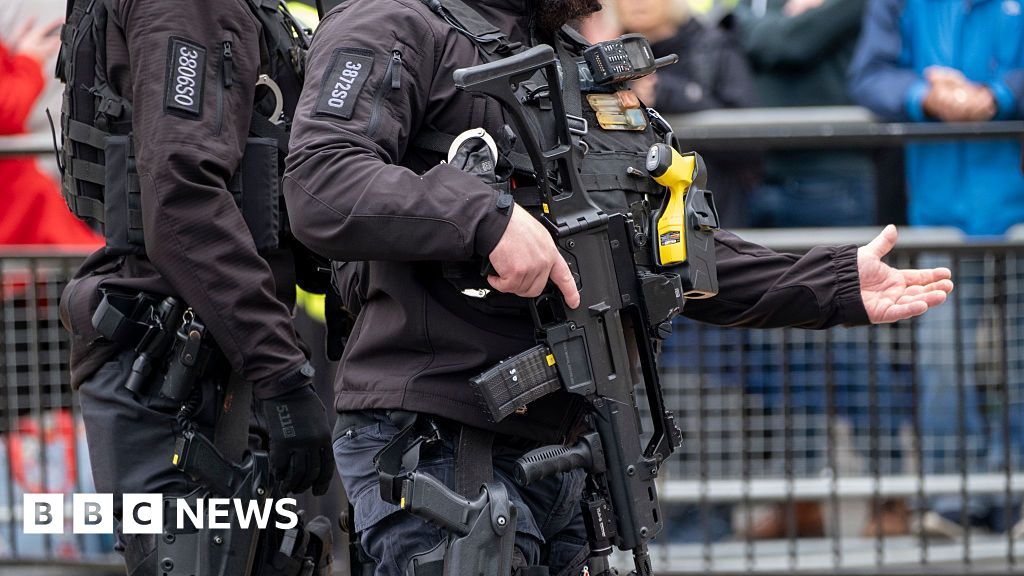



/https://media.globalcitizen.org/ea/9e/ea9e1a08-9cc4-472e-a0a7-57a76f7c1e06/screenshot_2025-11-06_at_101647.png?#)












![Architects use comics and humour to rethink sustainable cities [Interview] – Mongabay-India](https://imgs.mongabay.com/wp-content/uploads/sites/30/2025/11/06135611/1761635108000-768x511.jpeg?#)







